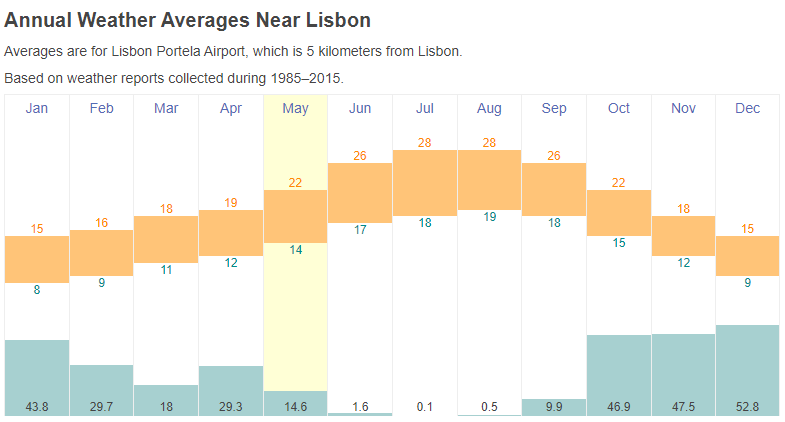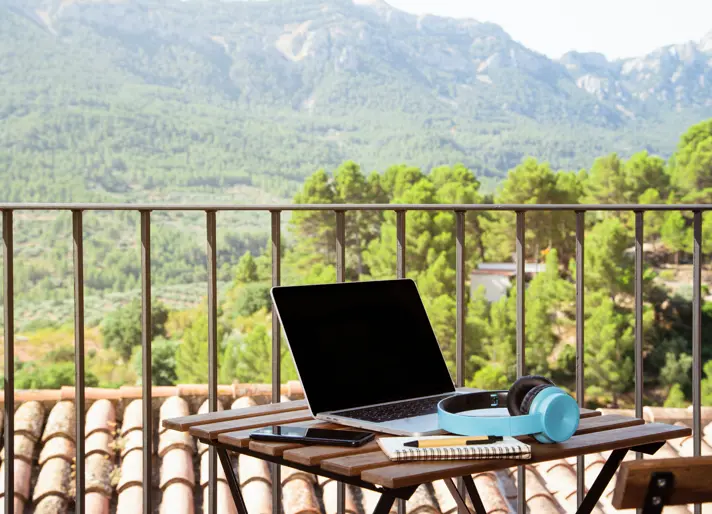What to Consider When Choosing a Remote Working Destination for your Next Workation

With the rise of remote working, increasingly more people are deciding to combine their holidays to new destinations, with working remotely from these destinations. Working from one home constantly can get tiring, but having to cut short holidays in beautiful destinations just to get back to work can be just as tiring. In this new world of remote working, it doesn't have to be a choice between spending time in a holiday destination or working. Imagine if you could work remotely from a destination of your choice, for free, without having to pay any accommodation costs.
At Swaphouse, we believe this is the future of travel, and our goal is to make it an accessible reality for every remote worker. Swaphouse enables you to swap your home with someone who lives in your destination of choice for any length of time both swappers desire, without exchanging any money.
Here are a few things to keep in mind while choosing your swapping destination. Shortlist your top destinations and rate them based on the criteria below to ensure you have an optimal workation!
1. Internet
Remote working calls for excellent internet connectivity, so it’s key to check how reliable the internet is when evaluating a workation destination. Websites like speedtest.net can help you assess the internet speeds of locations all over the world. To ensure that the exact home you’ll be staying in has reliable internet, the best way to find out is to ask your swapper. As they routinely work from home, they should be able to show you the exact download and upload speeds inside their home via screenshot or during a video call. Generally, in order to be able to have a Zoom video conference call, you’ll need at least 3-5 Mbps internet speeds, but in our experience that doesn't always guarantee good quality. For a good quality video chat we recommend your internet service speeds should be at least 20 Mbps download and 3 Mbps upload speed.
2. Timezone
Consider the timezone of your desired remote working destinations. If your job involves performing tasks at specific times, such as meetings or coordinating with clients or colleagues, make sure you’re aware of the time difference between your and your work stakeholders’ locations.
For example, while we live in the Netherlands, we often like to work from San Francisco. This means that 9 AM in San Francisco is actually 6 PM in the Netherlands, and with daylight savings time it can vary by another hour which can add even more confusion to scheduling. In order to stay attuned to colleague’s working times, we like to keep our work laptop time settings in the original office timezone (Central European Time), while setting all our other devices (tablets, mobile phones and watches) to the new time zone (Pacific Time).
Dateful Time Zone Converter is a handy tool when planning meetings or reaching out to colleagues to ensure the times line up.
Sometimes it’s simply easier to stay in the same timezone as other colleagues. Luckily there are plenty of exotic destinations to explore across the hemispheres within the same time zone. I recently had a call with a colleague in South Africa – she was sitting outside in a t-shirt during the heat of their summer, while I was bundled up under a blanket in the midst of Dutch winter.
Here are some destinations close to your timezone but on the complete opposite side of the world.
USA & Canada → Argentina, Brazil and Chile
Europe → South Africa, Egypt and Morocco
China → Malaysia & India
Japan → Australia
3. Visa
You may need a special visa or permit in order to visit your destination of choice, especially if you’d like to enjoy an extended stay. To ensure your top destinations are viable for you to work from, check out ivisa.com to determine the documentation and permission you need in order to enter and stay. The great news is that some countries have created special digital nomad visas in an attempt to attract remote workers. Examples include:
- Mexico
- Thailand
- the Bahamas
- Barbados
- Croatia
- the Czech Republic
- Georgia
- Curaçao
- United Arab Emirates
- Cape Verde
- the Cayman Islands
4. Location: remote, in the city or somewhere in between
Consider what outcomes you would like from your remote workation. Do you want to achieve relaxation? Or stimulation? What sorts of environments are you looking for? Perhaps you’re a city dweller and you’re looking for a completely different environment for a refresh. In that case, consider swapping with someone living in the countryside with access to lots of greenery, nature and a garden.
For European destinations, we like to get inspiration from Rick Steves. He has dozens of full-length episodes with travel tips to every country in Europe, and the surrounding areas–and the best part–they’re all available for free on YouTube.
5. Location: near or far
Depending on the duration of your home swap, you may want to stay nearer to or farther from home. The longest nonstop flight is from NYC to Singapore and spans 17 hours! If you’re coming from New York and only planning to spend a week in Singapore, then you’d be spending 25% of your trip just trying to get there and back (taking into account airport security, transfer and waiting times).
Another criteria which can help determine how near or far to travel can be the mode of transport you prefer to take to reach your destination. During the restrictive months of the COVID-19 pandemic, we felt much more comfortable with driving to a remote working destination than flying because if air borders closed and flights were canceled, ground borders in Europe still tended to be open. Traveling by car meant that we would be certain we could always return back to our home country.
6. Pleasant climate
The definition of a pleasant climate will vary for each individual. Some like it hot, some like it cool. Reflect on which climates you’ve enjoyed most for travel and for getting work done, and research which destinations accommodate such climates. We like to use timeanddate.com that list weather averages by month of the year so we can anticipate the temperature ranges in a location. A good example of a place we like because of its mild climate (even in the winter months) is Lisbon.
Another criteria which can help determine how near or far to travel can be the mode of transport you prefer to take to reach your destination. During the restrictive months of the COVID-19 pandemic, we felt much more comfortable with driving to a remote working destination than flying because if air borders closed and flights were canceled, ground borders in Europe still tended to be open. Traveling by car meant that we would be certain we could always return back to our home country.

7. Cost of living
While the accomodation costs of staying in a swapped house are free, there are other expenses to consider when choosing a workation destination. Perhaps you’re looking to stay in an urban area with access to lots of creature comforts. While first-tier cities will usually offer the most amenities, they can be more expensive than second-tier cities. If cost is a factor for you, consider a lesser-known city in your destination of choice. You can use this tool to compare the cost of living in cities around the world. In this tool you can for example see that consumer prices in Barcelona are 23.91% lower than in Amsterdam (without rent).
8. Safety
Safety is extremely important for a trouble-free workation. Websites of police departments, FBI crime data explorer, and websites like SafeWise can help you determine the crime rates of your destinations. Cities like Tokyo, Singapore, Osaka, Amsterdam, and Sydney are some of the safest cities in the world. That said, crime rates don’t have to deter you from visiting a destination that your heart desires if you travel smart.
9. Leisure activities
Since you are combining work and holiday, your destination should have leisure attractions that you enjoy within reach. Do you enjoy hiking and nature? Then choose a destination where you could easily go for a walk in the hills after work. Do you enjoy nightlife? Then make sure to check if your destinations have vibrant bar and club scenes nearby. Perhaps you want to stay fit while you’re traveling, in which case ensuring there are gyms around could be key. We like to explore a destination using Google Maps to see what sorts of things are on offer in the town or region. Use the Streetview functionality to get a sense for the vibe of the location and what it might feel like being there. And of course don’t forget to ask your swapper for their perspective!
10. Opportunities for connecting with others while away
One of the beauties of travel is the opportunity to connect with new people, and perhaps make life long travel buddies in the process. Coworking spaces such as WeWork, Spaces and Impact Hub offer the option to “hot desk” and work from any of the open spaces for a month-to-month fee. These coworking spaces frequently host events inviting all the workers to get to know each other over food and drinks.
Another popular way to meet others while working remotely is through Meetup groups. I once joined a Meetup for remote workers in Barcelona where we met up at a local cafe and sat around a long wooden table where we tapped away on our laptops while occasionally chatting. It was a wonderful way to meet others while sharing some productive time.
Different corners of the world have different forums for meeting other remote workers. But we’ve found that local Facebook groups are a good first go-option for connecting with other local digital nomads. Check out these three in Amsterdam, Barcelona and Bali.
Do you have more than one destination that fits your needs? Then it sounds like you have a lot of exciting workations to look forward to :)
Happy traveling!
About Swaphouse
Imagine if you could work remotely from a destination of your choice, for free, without having to pay any accommodation costs. At Swaphouse, we believe this is the future of work, and it’s our mission to make it an accessible reality for every remote worker.




